The Kaveri RIver and Kabini Rivers in south western India are both considered sacred rivers.The rivers are fed by different rivers and flow eastward and merge in Tirumakudalu Narasipura, in the Indian state of Karnataka.
Kitty Schulz, an annual ashram resident, creative, and arobatic performer, dipped a two pieces of cloth, one in each river. 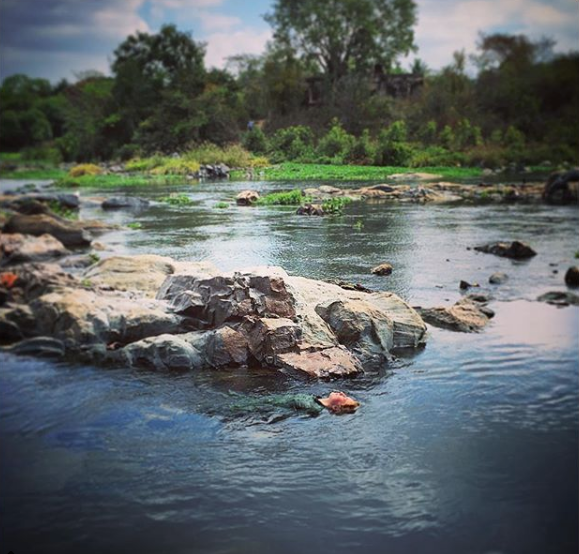 A Small scarf with red stripe was dipped in Kaveri RIver in Nanjanagudu, a town in the Mysore district famous for Srikanteshwara Temple.
A Small scarf with red stripe was dipped in Kaveri RIver in Nanjanagudu, a town in the Mysore district famous for Srikanteshwara Temple.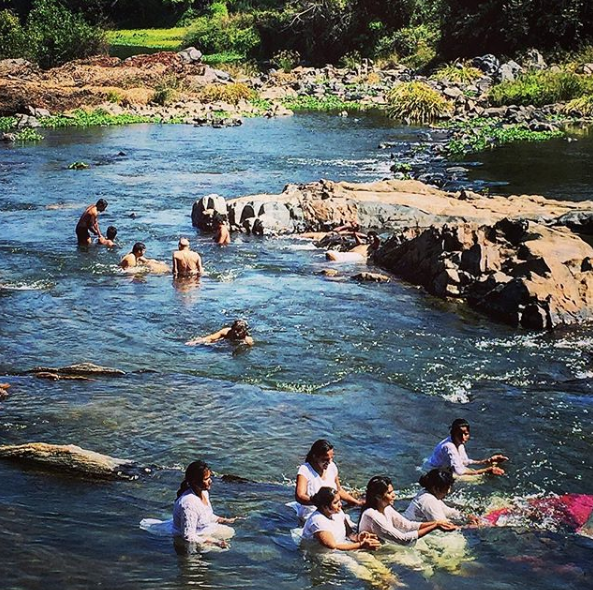 Segregated washing, ladies in the front and men to the rear washing away of sins at Gosai Ghat.
Segregated washing, ladies in the front and men to the rear washing away of sins at Gosai Ghat.
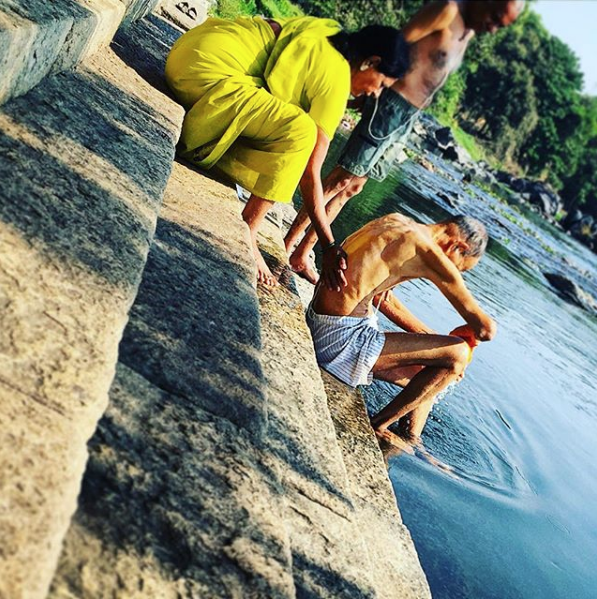 The ritual of bathing in a holy river is admired for the enduring devotion and tradition. A women lovingly washes her husband’s back.This is the location where a large piece of cloth was retrieved from the rocks to dip into the Kabini River.
The ritual of bathing in a holy river is admired for the enduring devotion and tradition. A women lovingly washes her husband’s back.This is the location where a large piece of cloth was retrieved from the rocks to dip into the Kabini River. 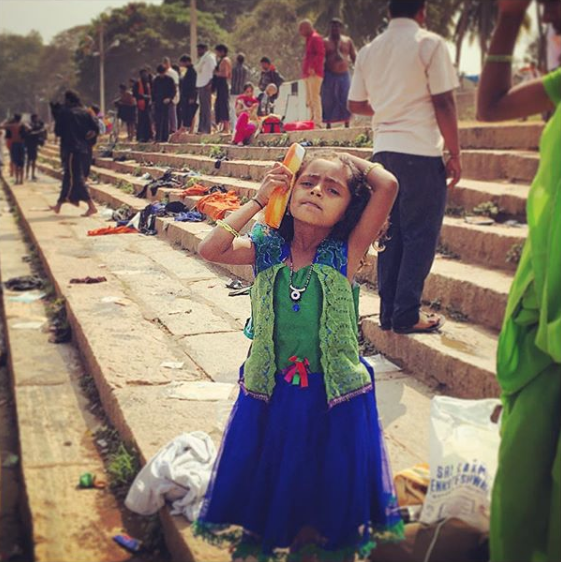 Tiny beauty combing her hair on the steps (ghats) leading down to the river.
Tiny beauty combing her hair on the steps (ghats) leading down to the river.
The larger scarf, found floating in the water early, was dipped where the two rivers merge at Tirumakudalu Narasipura.
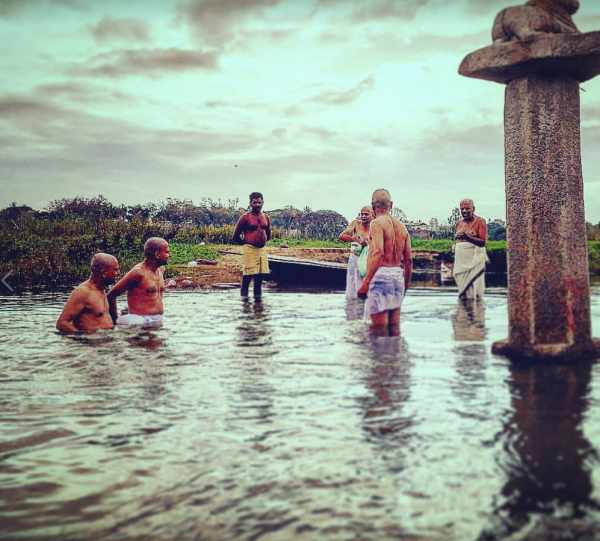 The fabric resembles the dhotis, the cloth men wear into the river. The temple priests, and other Brahmins, often wear white dhotis with golden embroidery around the edges. Priest chanting and men bathing beside a “temple,” a stone pole in the middle of the river. On top, is a sacred statue of the Nandi, the bull guarding the abode of Lord Shiva.
The fabric resembles the dhotis, the cloth men wear into the river. The temple priests, and other Brahmins, often wear white dhotis with golden embroidery around the edges. Priest chanting and men bathing beside a “temple,” a stone pole in the middle of the river. On top, is a sacred statue of the Nandi, the bull guarding the abode of Lord Shiva.
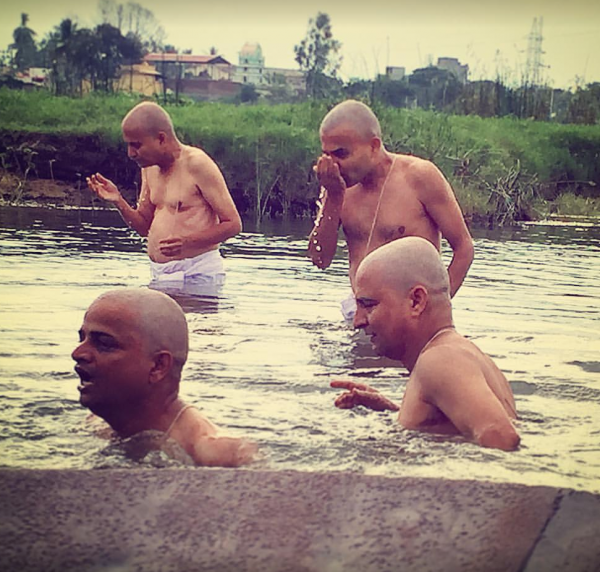 The men are freshly shaven, most likely the haircut is part of purification ritual which includes bathing in the river and often scattering ashes of a cremated relative.
The men are freshly shaven, most likely the haircut is part of purification ritual which includes bathing in the river and often scattering ashes of a cremated relative.
The holy confluence ofthe Kaveri RIver and Kabini Rivers is a national attraction where the Hindu pilgrimage, Kumbhamela, takes place.
HEADLINES: The 125 year Kaveri River water dispute, Soon, We May Not Have a Cauvery River to Fight Over




